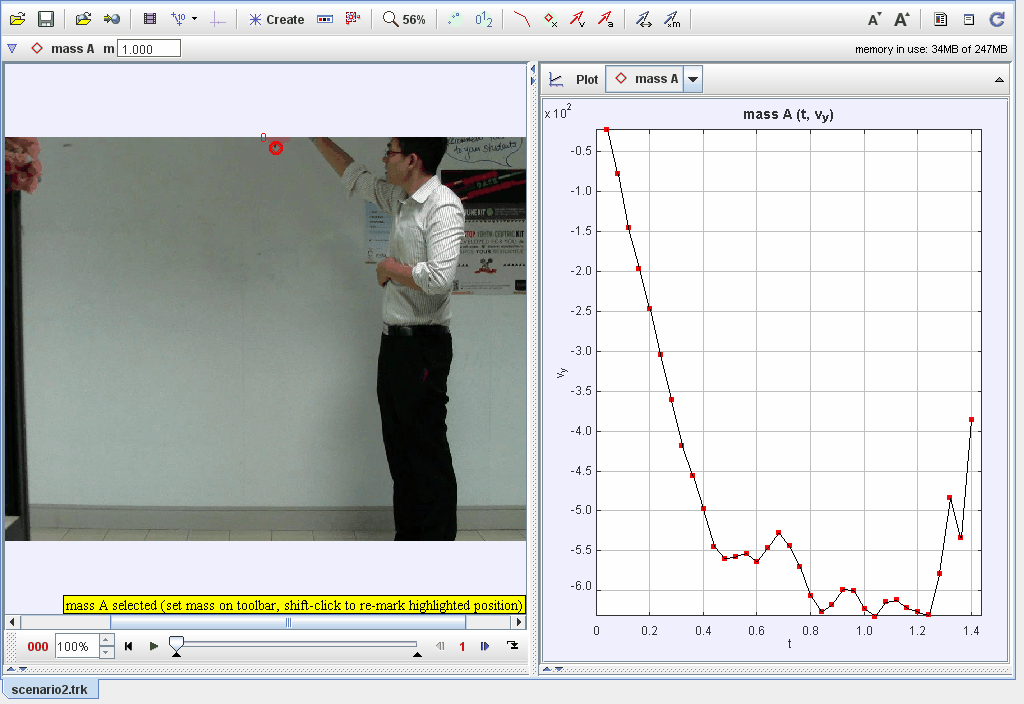

About
Video analysis of ballon falling with air resistance (Scenario 2). Students will appreciate effects of air resistance and terminal velocity
For Teachers
- scenario40.jpg
- scenario39.jpg
- scenario38.jpg
- scenario37.jpg
- scenario36.jpg
- scenario35.jpg
- scenario34.jpg
- scenario33.jpg
- scenario32.jpg
- scenario31.jpg
- scenario30.jpg
- scenario29.jpg
- scenario28.jpg
- scenario27.jpg
- scenario26.jpg
- scenario25.jpg
- scenario24.jpg
- scenario23.jpg
- scenario22.jpg
- scenario21.jpg
- scenario20.jpg
- scenario19.jpg
- scenario18.jpg
- scenario17.jpg
- scenario16.jpg
- scenario15.jpg
- scenario14.jpg
- scenario13.jpg
- scenario12.jpg
- scenario11.jpg
- scenario10.jpg
- scenario09.jpg
- scenario08.jpg
- scenario07.jpg
- scenario06.jpg
- scenario05.jpg
- scenario04.jpg
- scenario03.jpg
- scenario02.jpg
- Kinematics Video Analysis using Tracker (tutor).pdf
- Kinematics Video Analysis using Tracker (student).pdf
Credits
Author: Thomas Yeu, MJC Physics
Contact: yeu_chee_wee_thomas@moe.edu.sg

Document Brief: Title: "Tracker Scenario 2 Object Falling by MJC Thomas Yeu"
This document examines the motion of a free-falling object under the influence of gravity, analyzing its acceleration, velocity, and the role of air resistance. Observations and modeling are used to explore fundamental principles of motion in a gravitational field.
Study Guide:
Objective: Understand the motion of a free-falling object, focusing on the effects of gravity, initial conditions, and air resistance on its trajectory.
Key Concepts:
-
Gravitational Force:
-
The constant force exerted by Earth that accelerates objects downward at 9.8 m/s² (ignoring air resistance).
-
-
Free Fall:
-
Motion under the influence of gravity alone, with no other forces acting.
-
-
Air Resistance:
-
The opposing force exerted by air on an object, dependent on its shape, speed, and surface area.
-
-
Terminal Velocity:
-
The maximum velocity reached when the force of gravity is balanced by air resistance.
-
-
Equations of Motion:
-
Use kinematic equations to describe position, velocity, and acceleration during free fall.
-
Experiment Overview:
-
Setup: An object is dropped from a known height, and its motion is tracked using tools like video analysis or a motion sensor.
-
Procedure:
-
Measure the time taken to fall a specific distance.
-
Analyze velocity and acceleration profiles.
-
Observe deviations from ideal free fall due to air resistance.
-
-
Observation Points:
-
Time vs. velocity relationships.
-
The effect of air resistance on acceleration.
-
Attainment of terminal velocity if conditions permit.
-
Questions to Consider:
-
How does air resistance affect the motion of the falling object?
-
What is the relationship between mass, surface area, and terminal velocity?
-
How do initial conditions influence the object's motion?
Applications:
-
Understanding motion in gravitational fields for physics and engineering.
-
Designing parachutes and other devices that rely on air resistance.
-
Calculating trajectories for objects in free fall or descent.
FAQ:
-
Why study free-falling objects? Free fall illustrates fundamental principles of mechanics, such as gravitational acceleration and the impact of resistive forces.
-
What factors affect the motion of the falling object? Gravity, air resistance, mass, shape, and surface area all influence its motion.
-
What happens if air resistance is negligible? The object will accelerate uniformly at 9.8 m/s², regardless of its mass or shape.
-
Can terminal velocity be observed in this experiment? Terminal velocity depends on the height of the drop and the object’s properties; it may or may not be reached during the experiment.
-
What are real-world applications of this study? Insights from free fall are used in sports science, aerodynamics, safety equipment design, and space exploration.
- Details
- Written by leongster
- Parent Category: 03 Motion & Forces
- Category: 01 Kinematics
- Hits: 5779
